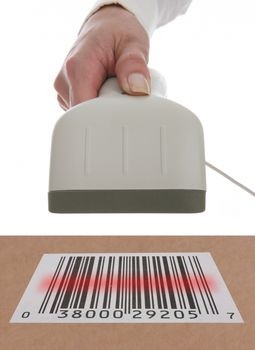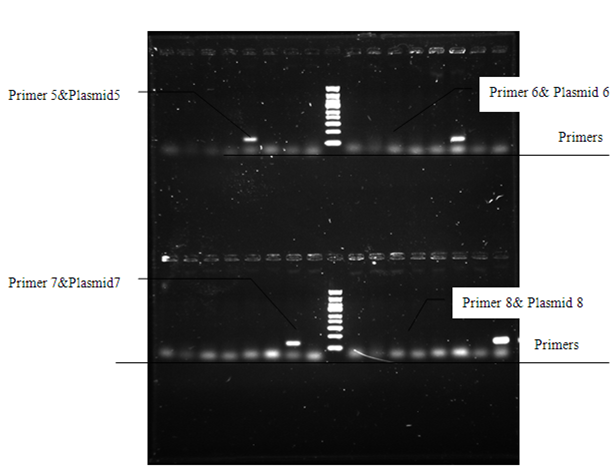Team:USTC/Tool
From 2009.igem.org
Cherrytree (Talk | contribs) |
Cherrytree (Talk | contribs) |
||
| (One intermediate revision not shown) | |||
| Line 4: | Line 4: | ||
= Problem & Solution = | = Problem & Solution = | ||
[[Image:barcode.jpg|thumb|right|200px|Barcode & its Scanner]] | [[Image:barcode.jpg|thumb|right|200px|Barcode & its Scanner]] | ||
| - | |||
*'''Problem 1:''' How to distinguish the different biobricks in a biobrick pool in experiment? | *'''Problem 1:''' How to distinguish the different biobricks in a biobrick pool in experiment? | ||
| - | |||
**To take a DNA sequencing?---it's costly and time-consuming. | **To take a DNA sequencing?---it's costly and time-consuming. | ||
| - | |||
**We are faced with such a problem to identify the final outputs of [https://2009.igem.org/Team:USTC/Project E.ADEM]. An inspiration comes from the supermarket checkout system where thousands of commodities are tagged by barcodes. This universal commercial ID both shortens the check-out time and adds the accuracy. By comparing our problem with this system, what we need to do can be concluded as to design barcodes for biobricks, '''BioBrick-Barcode''', as we call it. | **We are faced with such a problem to identify the final outputs of [https://2009.igem.org/Team:USTC/Project E.ADEM]. An inspiration comes from the supermarket checkout system where thousands of commodities are tagged by barcodes. This universal commercial ID both shortens the check-out time and adds the accuracy. By comparing our problem with this system, what we need to do can be concluded as to design barcodes for biobricks, '''BioBrick-Barcode''', as we call it. | ||
| - | |||
*'''Problem 2:''' Where is the scanner? | *'''Problem 2:''' Where is the scanner? | ||
| - | |||
**PCR (Polymerase Chain Reaction)[http://en.wikipedia.org/wiki/PCR], which is so conveniently conducted, can serve as the scanner while the primers it needs are the analogue of barcode sequences. | **PCR (Polymerase Chain Reaction)[http://en.wikipedia.org/wiki/PCR], which is so conveniently conducted, can serve as the scanner while the primers it needs are the analogue of barcode sequences. | ||
| Line 55: | Line 50: | ||
|align="right"| | |align="right"| | ||
[[Image:tool_result.png|450x450px|thumb|left|cross experiment result]] | [[Image:tool_result.png|450x450px|thumb|left|cross experiment result]] | ||
| - | | | + | |<p> In the electrophoretogram, only the combination of primer 5 & plasmid 5, primer 6 & plasmid 6, primer 7 & plasmid 7 lead to PCR results. Along with other electrophoretograms we conclude that this set of primers can be used as a set of barcodes.</p> |
|} | |} | ||
Latest revision as of 17:19, 21 October 2009
| Home | Team | Project | Modeling | Parts | Standard & Protocol | Software Tool | Human Practice | Notebook |
|---|
Team:USTC/Tool
Contents |
In the electrophoretogram, only the combination of primer 5 & plasmid 5, primer 6 & plasmid 6, primer 7 & plasmid 7 lead to PCR results. Along with other electrophoretograms we conclude that this set of primers can be used as a set of barcodes. |
Application
- In Synthetic Biology: BioBrick barcodes are a set of artifical DNA parts designed for PCR. They can be used alone as a high-quality PCR primer. Also, they can be used in a group as a convenient tool to identify the biobrick parts just as we do.
- Beyond Synthetic Biology: We create a new software to design PCR primers without a template. The primers chosen from a random oligo-sequences can enlarge the application scope of PCR.
 "
"


